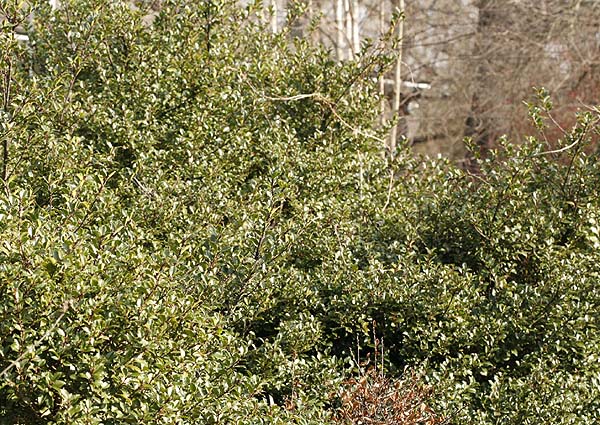Keep Your Shrubs And Trees Healthy This Winter.
Water them before the Winter Freeze Sets In.

This Japanese Maple looks magnificent in summer. Lets make
sure it stays that and all your shrubs and trees too.
As a Master Gardener volunteer one of the most frequent questions I get asked in spring and early summer is about sad looking shrubs and trees. As spring progresses the poor plant looks sicker and more unhappy. They are not doing well or their leaves are brown and wilted. The unhappy homeowner wants to know what is wrong with their plant. The usual statement is 'it was fine last year, now this spring its not'.
The most common reason for this problem is because the plant was not given adequate water before the winter set in. This is especially true for evergreen shrubs but can affect any shrub or small tree. It is vitally important for new trees and shrubs that have been planted this year or last year.
Why is winter water so important?
Even though plants are built to like sunlight and use it for food
they are just as susceptible to the heat from the sun and the burning
rays are we are. Plants however cant just pick up some sunscreen and slather
it on like we can, and they most certainly cant get up and move to a better
location.
What plants can do is sweat. Yes plants sweat just like we do. They are too hot and need to keep the damaging rays from the sun at bay. To do this they have to have water. They keep some of this water in their roots, stems and leaves but the reserve supply is in the soil. IF the soil dries out the plant can't get enough water to sweat, so it wilts, at least in summer it wilts.
Winter is a bit different. While it's cold in the winter for a lot of the United States its still sunny. This sunshine might not produce a lot of heat during the winter months but it still produces some and the damaging ultra violet rays are just as strong. If the temperatures are reasonable and the ground is not frozen then the plant can still suck up water from the soil and most often its fine.

These Holly bushes are in full sun facing south. They will
take a lot of sun during the winter months
However if the temperatures are very low the ground freezes. There are
many many days when we have snow on the ground but bright sunshine. We
all know what that's like, we need sunglasses to keep the glare down.
It can even be quite warm during those sunny days but not enough to melt
the snow and unfreeze the ground.
Now that poor plant is standing there in the bright sunshine with reflected
glare coming off the snow covering and it does not have any sunglasses
to put on. It tries to sweat, if it has managed to collect enough water
in its 'body' (roots stems and leaves) it can do this. If it runs out
it will try and suck it out of the ground, but when it sucks on that straw
its blocked because the ground and the water in it is frozen so just like
you sucking on a straw that blocked it cant get anything. So it suffers.
If this happens quite a few times during the winter months the plant
gets very stressed. Imaging being out in the cold glaring sun getting
hot and having nothing to drink, you would not like it much either.
For the most part the plant does not show these signs of stress until
the spring comes. Then when new growth should be bursting out of those
buds and perhaps flowers forming the poor plant is exhausted. It does
not have the strength to make new growth or even recover from the stress
it had over the winter. This is when you start to see the problems in
the plant. However in many cases its now too late to help. The plant is
just too exhausted to go on.

Although these shrubs have lost their leaves the stems
will still take a lot of sunshine during the winter months.
How to keep your plants from being exhausted.
This scenario can be prevented by making sure all your plants get
a good amount of water in the late fall and early winter months. Don't
just stop watering them because the weather gets cold. Even if the leaves
are falling off the trees if its not raining much or the wind is blowing
a lot then water those shrubs. The need to have a good water reserve to
get them through the cold, frozen months and come through in spring as
a happy healthy plant. What you do in the fall and early winter can make
a massive difference to how healthy your plants are in the spring.
This is especially important to shrubs that are usually shaded by deciduous
plants during the summer months. In the winter all these leaves are gone
and the plant is subjected to the full force of the sunlight without any
protection. Its going to get a much higher dose of light than it would
during the summer. Even if the plant is now just stalks and twigs with
no leaves its still has to endure the ravages of the winter sun. Giving
it as much help as possible will ensure it's a happy healthy plant next
spring.
With global warming changing our weather patterns this problem is increasing. Many areas are getting much warmer temperatures later into what would normally be winter. This means that the plant is using up more water dealing with the warmer sunshine, than it would normally do. The upside is the ground is not frozen so it can replenish its supplies of water, but only if you ensure that they are there. Often there is less rain at this time of year. Then suddenly the warmer weather ends and its cold and frozen. The plants are finding it hard to adapt to the new weather patterns and are stressing out more. So they need your help.
So don't put the hose away if the temperature falls - although you might want to bring in the watering end overnight to stop it freezing. If you have many days of cool but not freezing weather with sunshine and no rain then make sure you water those shrubs and small trees. Large mature trees can usually take care of themselves. Water everything at least once a week and give it a good soak not just a few sprinkles, keep doing that every week until its just too cold or the ground freezes up. Your plants will love you for it.
| Janice Hazeldine PhD is the owner and head grower of Floral Encounters an organic Medicinal Herb farm that is also a designated sanctuary for pollinators. |





